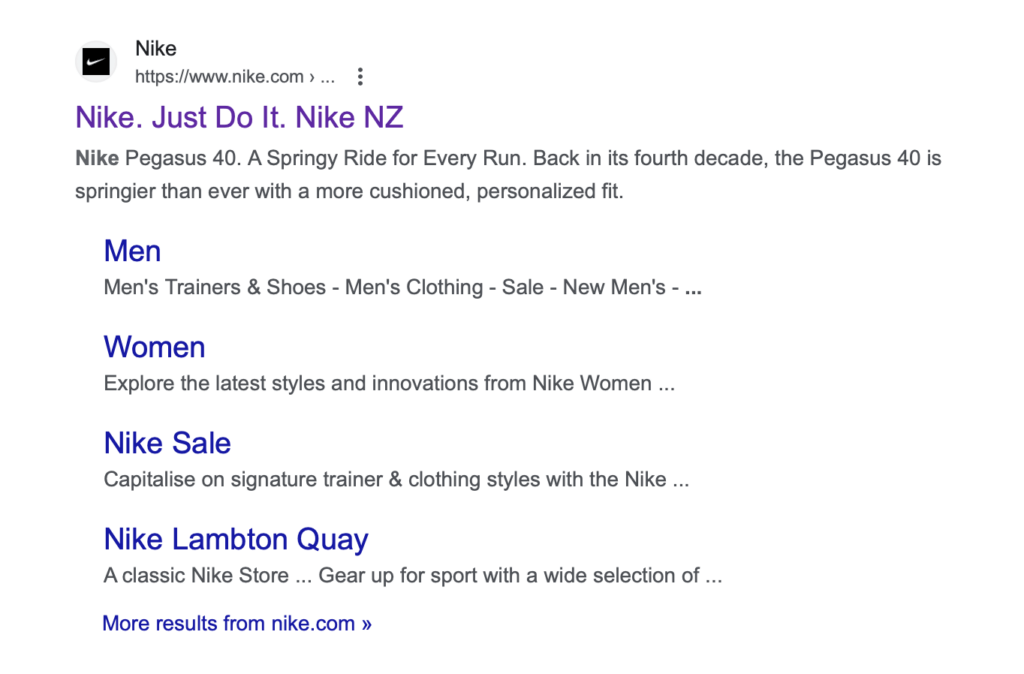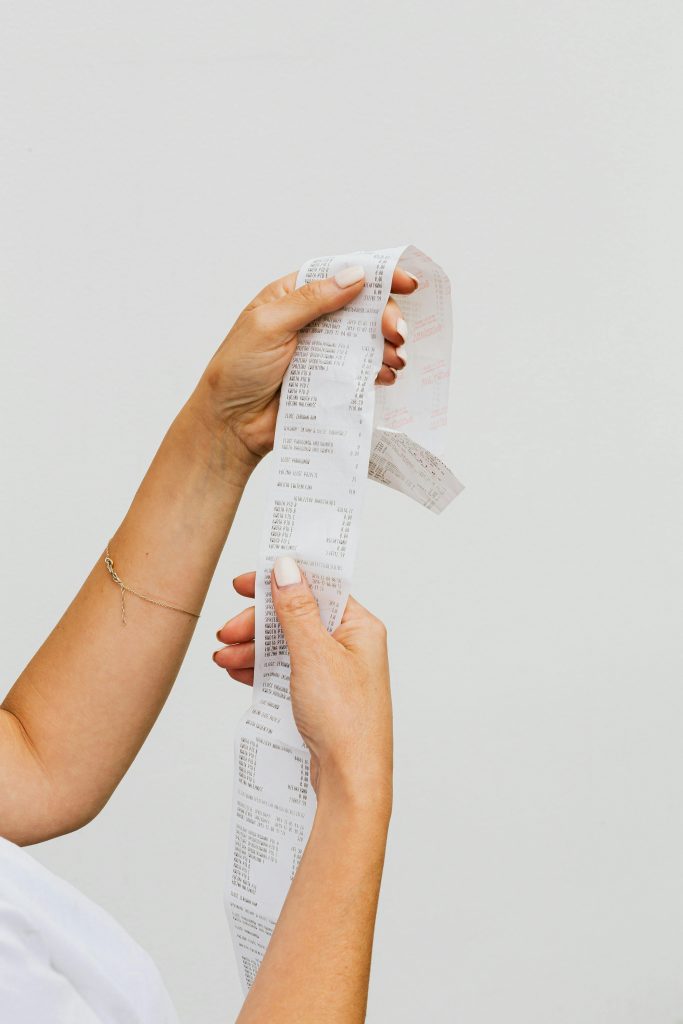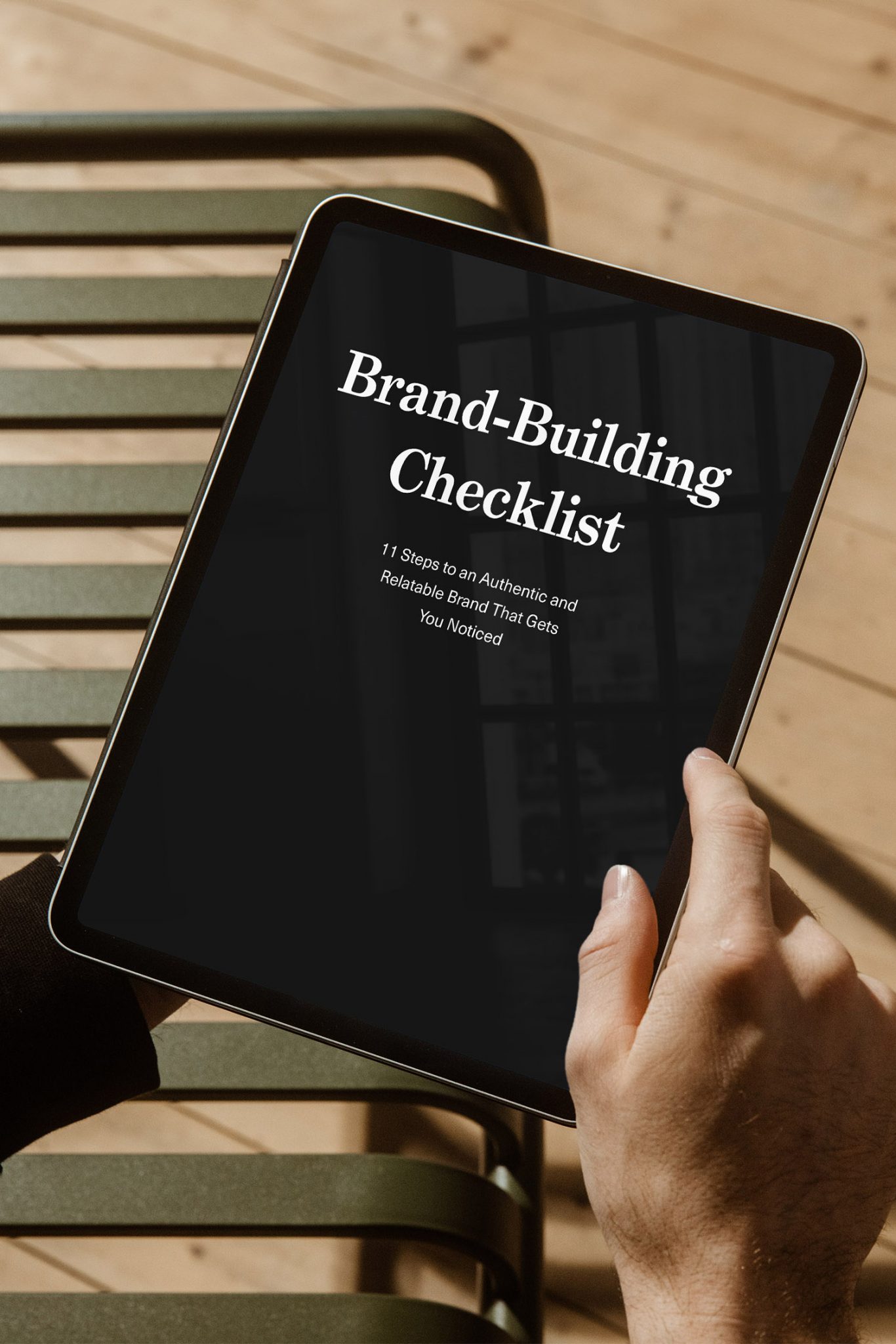Have you ever wondered what a tagline really is? It’s more than just a catchy phrase—it’s the essence of your brand, summed up in just a few words.
In this article, we’ll discuss the role of taglines, why your brand needs one, and how taglines differ from slogans.
I’ll also use real-world tagline examples to introduce you to different types of taglines and give you tips on how to write a tagline that will resonate with your audience.
Let’s dive right in.
What Is a Tagline?
Did you know that ‘tag line’ literally means ‘a line that sticks’? But a tagline is more than just a sticky phrase—it’s a short, powerful expression that captures the essence, uniqueness, and personality of your brand.
Thanks to your tagline, people can identify your brand even when the brand name is not visible. It’s almost like your company’s signature. And it’s one of the most effective ways to increase brand recognition.
Tagline vs. Slogan: What’s the Difference?
A tagline and a slogan are two different things. Although both are memorable phrases or sentences, they serve quite different purposes.
A slogan is often used to promote a specific temporary offer.
A tagline, on the other hand, has a longer-term role. It represents your brand as a whole—its core values, unique selling point and personality. A tagline goes beyond individual products.
In fact, a well-crafted tagline can become inseparable from your brand identity over time, while a slogan might be forgotten.
Let’s take Nike as an example. Since 1988, Nike has used its iconic tagline, “Just Do It.” It embodies Nike’s brand ethos of determination, motivation, and overcoming challenges.
Nike consistently uses this tagline in its marketing materials—from advertising and packaging to other prominent placements such as in Google search results.
By repeating it consistently across all platforms—from ads to packaging to Google Search—Nike has made ‘Just Do It‘ inseparable from its brand identity.

In addition to this long-term tagline “Just Do It,” Nike has used various slogans tied to individual campaigns over the years, such as:
- Find Your Greatness
- Unlimited You
- Believe in something. Even if it means sacrificing everything.
Why Your Brand Should Have a Tagline
Let’s be honest. Not all brands have or need a tagline. Nevertheless, taglines offer many advantages.
Here are some reasons why they are so popular in branding:
Unique Brand Identity
Your tagline can help emphasise your brand’s unique identity—its values, personality, vision and mission. By summarising the essence of your brand in just a few words, your tagline can help form an image in people’s minds.
Take Audi’s tagline, for example: “Vorsprung durch Technik”. This tagline highlights Audi’s unique benefit of technological innovation and progressiveness.
Quick Tip: Your Brand Name and Tagline Should Complement Each Other
Your tagline should complement your brand name.
If the brand name lacks descriptiveness, the tagline can often help to communicate the company’s purpose better. An example is Amazon’s “From A to Z.”
On the other hand, if the brand name is descriptive enough, the tagline can often add some personality and emotion, such as Airbnb’s “Belong Anywhere” tagline, for example.
Increased Brand Recognition
Your tagline can also help increase brand recognition.
A memorable tagline can leave an impression and foster a sense of familiarity with your brand.
When used consistently and repeatedly, your tagline can become a distinctive brand asset that is instantly associated with the brand.
But what makes a tagline truly effective?
In her book Building Distinctive Brand Assets, Jenni Romaniuk studies the degree to which consumers link a tagline to a specific brand. She focuses on two key factors: fame (how widely recognised the tagline is) and uniqueness (how strongly it is associated with the brand).
The research reveals that simplicity is essential for a tagline’s success. Overly complex taglines, packed with too much meaning, can compete with the brand name for recall—because both are word-based expressions processed within the same semantic memory network.
Romaniuk’s study identifies several elements that can make a tagline more memorable and distinctive:
- Audio Enhancement: Taglines that include rhythm or music are more likely to be memorable.
- Brand Name Integration: Including the brand name in the tagline helps reinforce the association. The brand name can potentially be removed later once recognition is established.
- Rare or Unusual Words: Unique words make a tagline stand out more and increase brand linkage.
- Posing Questions: Questions spark curiosity, leading to higher recognition.
- Length and Rhyme: Interestingly, rhyme and length don’t impact a tagline’s impact on brand linkage. Still, shorter taglines are easier to remember.
If you like these tips, you’ll definitely enjoy my article What Makes a Brand Recognisable?, in which I review three great research sources on brand distinctiveness and recognition.
Customer Connection
A well-worded tagline appeals to your customers on an emotional level. In doing so, it can create a connection between them and your brand.
Your tagline can evoke positive emotions by appealing to your customers’ values or addressing their needs and desires.
In the case of Audi, the tagline “Vorsprung durch Technik” taps into people’s desire for a car with cutting-edge technology. Much unlike Fiat’s “Driven by Passion,” which taps into the emotion of enjoying the drive.
Differentiation
Your tagline can also help differentiate your brand from its competition by emphasising the brand’s unique selling point and personality. It’s an opportunity to say, “Hey, we’re different, and here’s why.”
For Audi, this means positioning itself as the go-to brand for technologically advanced cars. Volvo, on the other hand, is all about safety, and so on.
Does Every Brand Need a Tagline?
The short answer is no.
However, a tagline can bridge the gap between your brand name and its intended meaning.
This is especially true when the name itself doesn’t convey the essence of the brand or when your brand is still establishing itself.
Nevertheless, not all brands need a tagline.
A look at your goals, target audience, and brand strategy will give you an idea of whether a tagline is the right choice for growing your brand.
5 Types of Taglines—Plus Real-World Examples for Each
Let’s look at the different types of taglines and some tagline examples for each type. There’s not always a clear cut, though. Many examples would fit into multiple categories.
Descriptive Taglines
Descriptive taglines are brief and impactful summaries. They capture the essence of a brand.
They may offer insights into the brand’s essential features, benefits, or unique selling points by vividly describing what it stands for and offers.
Here are a few examples:
- Taste the rainbow. (Skittles)
- Belong anywhere. (Airbnb)
- Broadcast Yourself. (early Youtube)
- We’ll leave a light on for you. (Motel 6)
- There are some things money can’t buy. For everything else, there’s MasterCard. (MasterCard)
- All the News That’s Fit to Print (The New York Times)
Inspirational Taglines
Inspirational taglines tap into people’s desires, ignite their passion and motivate personal development.
They go beyond product features and benefits. Instead, they speak to people on a more emotional and aspirational level.
Here are some examples of inspirational taglines:
- Think Small. (Volkswagen)
- Impossible is nothing. (Adidas)
- Let’s go places. (Toyota)
- Nonstop you. (Lufthansa)
- Because You’re Worth It. (L’Oréal)
- Delighting You Always (Canon)
- Innovation and You (Philips)
Humorous Taglines
Humorous taglines use wit and lightness to capture our attention and entertain us. That way, they create a positive and playful association with the brand.
Here are some examples:
- That was easy. (Staples)
- Maybe she’s born with it. Maybe it’s Maybelline. (Maybelline)
- Red Bull gives you wiiings (Red Bull)
- Nothing runs like a Deere. (John Deere)
- Finger-Lickin’ Good (KFC)
- Don’t leave home without it. (American Express)
Provocative Taglines
Provocative taglines challenge our conventional thinking. By pushing boundaries and daring to be different, these taglines captivate our attention and provoke thought.
Here are a few examples of provocative taglines:
- Can you hear me now? (Verizon)
- Designed to be deleted (Hinge)
- Democracy dies in darkness. (The Washington Post)
- What happens here stays here. / What happens in Vegas, stays in Vegas. (Las Vegas)
- Citi never sleeps. (Citibank)
- Betcha Can’t Eat Just One (Lay’s)
- Off The Wall (Vans)
Call-to-Action Taglines
Call-to-action taglines motivate the audience to take action and interact with the brand.
Some examples of Call-to-Action Taglines are:
- Just do it (Nike)
- Think Different. (Apple)
- Eat Fresh. (Subway)
- Let’s go (Hertz)
- Have a break, have a KitKat. (KitKat)
- Have It Your Way. (Burger King)
Rhythmic or Rhyming Taglines
These taglines use rhythmic patterns or rhymes to become memorable and capture our attention.
Here are some examples:
- Melts in your mouth, not in your hands. (M&M’s)
- The quicker picker-upper. (Bounty)
- It keeps going… and going… and going. (Energizer)
- I’m lovin’ it (McDonald’s)
- Shave Time. Shave Money. (Dollar Shave Club)
- Buy it, sell it, love it (eBay)
Brand Essence Taglines
Brand Essence Taglines describe what the brand does and stands for.
Here are some examples of Brand Essence Taglines:
- Open Happiness. (Coca-Cola)
- The happiest place on Earth. (Disneyland)
- Connecting People (Nokia)
- A diamond is forever. (De Beers)
- King of beers. (Budweiser)
- Further (National Geographic)
- Think (IBM)
- Quality Never Goes Out of Style (Levis)
- That’s the power of Intel Inside (Intel)
- Music for everyone. (Spotify)
Competitive Taglines
Competitive Taglines are designed to distinguish a brand from its competitors, mainly by highlighting its unique selling points.
Here are some examples of Competitive Taglines:
- We try harder. (Avis)
- Think different. (Apple)
- America like you’ve never read it. (New Yorker)
- Better sound through research. (Bose)
- Sheer Driving Pleasure. (BMW)
Characteristics of a Strong Tagline
These features can characterise a great tagline:
- Memorable: easy to remember
- Clear: is simple and effectively communicates your brand’s message
- Unique: sets your brand apart from its competitors and links back to the brand name
- Reflective of Brand Identity: aligns with brand values and personality
- Engaging: captures attention and generates interest
- Timeless: remains relevant over time
- Versatile: works across all marketing channels
- Honest and Positive: fosters trust and is authentic to the brand
- Action-Oriented: inspires the audience to take action
- Scalable: adaptable to future brand growth
How to Write a Tagline That Sticks (Step-By-Step)
Writing a tagline for your brand can be a challenging task. But there are some steps you can follow to make the process a bit more manageable.
Here are some valuable tips:
1. Understand Your Brand and Competition
Start by gaining a good understanding of your brand. What are your brand’s unique personality traits, values, and selling points?
Clarify what sets your brand apart from the rest.
2. Define Your Target Audience
Identify and research your target audience. What are their needs, preferences, and aspirations? What problems are they dealing with?
Your tagline should resonate with them to evoke an emotional connection.
3. Brainstorm Keywords and Phrases
Generate a list of keywords and phrases that reflect your brand’s unique identity.
Choose words that trigger emotions, convey your brand’s benefits, or make people curious.
Consider Jenni Romaniuk’s findings. Can rhythm, unusual words, or questions enhance your tagline? Or can you incorporate the brand name?
4. Keep It Concise
Remember that a tagline should be short, simple and memorable. Aim for a short phrase that captures the essence of your brand in a few words.
There is no rule on the exact number of words a tagline should have, but most have under eight words.
In fact, the average word count for the tagline examples in this article is 4.6.
5. Emphasise Uniqueness
Highlight your brand positioning. What makes the brand unique and differentiates it from others in your industry?
Whether you communicate these qualities in a humorous, competitive or provocative way largely depends on your brand personality and overall identity.
6. Use Language Techniques
If suitable to your brand, experiment with language techniques such as alliteration, rhyme, or wordplay to make your tagline more memorable and engaging.
7. Test and Refine
Once you have a few tagline options, gather feedback from stakeholders, customers, or focus groups. Then, refine and iterate based on the feedback.
8. Check for Alignment
Double-check that your tagline aligns with your brand identity. It should be consistent with your brand voice and resonate with your target audience.
9. Evaluate Effectiveness
Monitor the impact of your tagline over time. Does it effectively connect with the right people? Does it drive brand recognition? Is it attractive and clear to customers?
That’s it. I hope you found this article helpful. Let’s recap the key points.
Key Takeaways
A tagline is a short expression that captures your brand’s essence and helps communicate its unique values and personality.
A tagline differs from a slogan as it represents your brand long-term rather than being tied to specific promotions or campaigns.
A tagline can differentiate your brand, build recognition, shape its identity, foster consistency, and establish an emotional connection.
Not all brands need a tagline, but it can bridge the gap between the brand’s name and purpose.
A strong tagline is memorable, clear, unique, reflective of the brand’s identity, engaging, timeless, versatile, honest, positive, action-oriented, and scalable.
There are various types of taglines we studied with real-world tagline examples—from humorous to provocative.
When creating your tagline, consider the following steps: understand your brand, define your target audience, brainstorm, keep it concise, emphasise the brand’s uniqueness, consider language techniques, test and refine, check for alignment with the brand identity, and evaluate the tagline’s effectiveness.
So to sum up, a well-crafted tagline is more than just a punchy phrase; it’s a strategic tool that helps people to remember your brand, connect with your values and understand what sets you apart.
Whether you’re building a personal brand, launching a new business or refining your brand strategy, a great tagline can make your messaging stronger and clearer.
Begin by identifying your brand’s core values, target audience, and desired emotional impact. Then keep it simple, specific and consistent with your tone of voice.
Still stuck? Revisit the examples above and let them inspire you. If you’re currently working on a tagline, I’d love to hear what you come up with!
By the way, you might also like my article 5 ways a tagline can help your brand, which goes into a bit more detail about the benefits of taglines.
Title image by Armin Rimoldi






